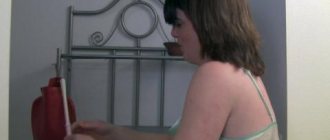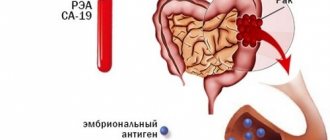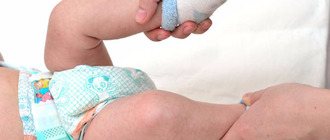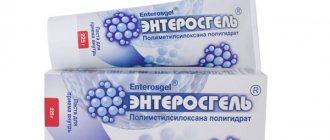Naturally, an enema for constipation at home is not a panacea, since it will not correct all health problems and will not improve bowel function. To do this, it is necessary to change the diet, lifestyle and cure ailments that provoke fecal retention.
The use of an enema should be supervised by the attending physician. Recommendations depend on the diagnosis made by a specialist, because in some cases herbal enemas are needed, in others - oil enemas. Sometimes giving an enema is prohibited. There are few such cases, but they do exist. The reason for the ban may be a disease that blocks the passage of the rectum with body tissues. For example, the development of oncology education.
Why you shouldn't do an enema too often
Despite the fact that an enema for constipation is a procedure with a more physiological effect on intestinal function than a medicinal one, it must be approached very carefully. In addition to limiting the use of this method of treatment in the presence of diseases blocking the anal passage, a number of consequences must be taken into account.
The intestine has its own rhythm of peristalsis: its muscles work with a certain frequency and strength. When a patient is given an enema once, it has virtually no effect on the functioning of the internal organs. If an enema is done too often, a disruption in the functioning of the intestinal muscles occurs (they simply weaken).
Due to the constant infusion of water, including any medications, water intoxication may develop through the anus.
In addition to the physical impact and oversaturation of the body with water, frequent laxative enemas for constipation can cause an imbalance of minerals in the body (electrolytes). In such a situation, a large amount of sodium salts will be removed from the body, which will quickly develop into an acute disease. Such a development of the disease will require special treatment.
Complex therapy for chronic constipation
Treatment of chronic constipation begins with finding out the cause of its development. If a malfunction of the intestines occurs due to poor nutrition and a sedentary lifestyle, then to restore stool it is enough to adjust the diet, exercise and, if necessary, occasionally take laxatives (no more than once a week).
If the absence of stool is observed against the background of any disease of the gastrointestinal tract, then it is necessary to consult a specialist, especially if nothing helps the child’s constipation .
Treatment of chronic problems with bowel movements is carried out comprehensively. Treatment should be aimed at:
- restoration of daily bowel movements;
- facilitating the passage of feces;
- improved digestion;
- refusal of laxatives and enemas;
- normalization of metabolic processes;
- addressing the underlying problem of dysfunction.
Types of enemas
Enemas can be divided into several groups:
- Cleansing. They wash not only the rectum, but also almost the entire intestine. Does not affect receptors and tissues of the mucous surface of the inner walls of the intestine. For maximum effect, you must immediately take a horizontal position after infusing the liquid to give some time for all stool to soften.
- Oily. Used to remove hardened feces. They consist of one type of vegetable oil (you cannot mix 2 or more types). The fatty liquid coats the intestinal walls and feces. Has a relaxing effect on the intestines. The result of the effect will become visible approximately 11 hours after the procedure.
- Hypertensive. These enemas are used when it is impossible to use cleansing ones, if accumulations of feces are in the direct passage. The saline solution in the process draws moisture from the intestinal walls and stimulates its peristalsis.
Basic rules for performing an enema, violation of which will not help with constipation
The procedure is carried out with the obligatory observance of several rules, if violated it may be unsuccessful:
- Selection of a medical product - if the integrity of the pear is broken, then when pressed, the contents do not enter the rectal cavity, but pour out. The size and integrity of the syringe tip also influences the success of the procedure.
- Body position – the procedure is performed on the side, with the legs bent at the knees and hip joints. If the body position is incorrect after inserting the syringe tip, the solution may not enter the rectal cavity, but may spill out.
- Technique for inserting the tip - if the tip was not lubricated with Vaseline or inserted to an insufficient depth (in childhood, the tip of the syringe is recommended to be inserted to a depth of 2 to 5 cm, depending on age), then the liquid in sufficient quantities will not enter the lumen of the lower parts of the gastrointestinal tract tract.
- Selection and preparation of solution - to cleanse the intestines, an aqueous solution at room temperature is used. If the liquid is warmer, then it can be quickly absorbed from the mucous membrane, as a result of which the desired result will not be achieved. To combat constipation and soften stool, an oil solution is used, which must be heated to +30-32°C, otherwise full administration will be impossible.
- Time of bowel movement - after the introduction of liquid, the urge to defecate appears, but you need to be patient and wait 15-20 minutes. After performing the manipulation on a newborn and a child up to one year old, premature release of fluid is prevented by squeezing the buttocks with the fingers.
During the procedure, it is very important to ensure that all conditions are correctly met.
Other reasons when an enema does not help with constipation in children and adults
Sometimes it is not possible to achieve results due to the following objective reasons:
- Reflex premature bowel movement, which cannot be controlled, including in small children, by squeezing the buttocks with the fingers.
- The presence of an acute inflammatory process in the mucous membrane of the lower gastrointestinal tract.
- Very dense feces that have a “stony” structure - it is not possible to soften the contents of the intestines. In such cases, a consultation with a doctor is required, who, if necessary, will prescribe sigmoidoscopy or colonoscopy with the extraction of dense contents under visual control using special manipulators.
- Volumetric tumor process in the lower parts of the gastrointestinal tract - the large size of the tumor protruding into the intestinal lumen prevents obtaining the desired effect.
- A sharp decrease in the tone of the walls of the colon with an expansion of the diameter of the lumen is a pathological condition that is accompanied by an enlargement of the lower parts of the colon, often of congenital origin and called megacolon. In this case, an accumulation of feces occurs, and after administration of the solution it is not possible to achieve an effect.
Important! Pathological reasons for the lack of effect require objective diagnosis. After identifying the disease, determining the severity of its course, as well as the nature of the changes, appropriate treatment is prescribed. In the presence of some urgent conditions (mechanical intestinal obstruction), surgical intervention may be required.
Contraindications
There are a number of limitations in using an enema to relieve constipation at home:
- acute hemorrhoidal inflammation with accompanying bleeding;
- the presence of pain in the abdominal area, the cause of which is not clear;
- the presence of inflammation or tumor formation in the large intestine;
- bleeding in the gastrointestinal tract;
- erosions, ulcers, cracks and other lesions of the intestinal walls;
- pregnancy;
- lactation period;
- children without the approval of the attending physician;
- acute form of a chronic disease;
- heat;
- bleeding in the anal area;
- stomach upset;
- inguinal or abdominal hernia;
- recent stroke or heart attack;
- severe headaches;
- feeling of body weakness;
- nausea;
- rehabilitation period after surgery.
Conditions requiring emergency medical attention
After an incorrect procedure, urgent conditions may develop that require emergency care:
- bleeding;
- violation of the integrity of the mucous membrane;
- damage to the intestinal walls;
- prolapse of the rectal mucosa.
The procedure can be used as an urgent method of bowel movement for constipation at home. In order to go to the toilet without problems, they achieve normalization of stool with the help of diet and medications. The doctor decides what medications and how much to take.
Source
Sequence of actions: how to properly administer an enema for constipation
In order for the enema to help cope with the disease, and for the body not to be harmed, the enema must be carried out, adhering to a certain sequence of actions:
- Prepare all the necessary items. Place them within easy reach of you. Make a solution and then pour it into Esmarch’s pear or mug (depending on the type of enema). You can invite an assistant. If you yourself have certain skills and experience, you can do the procedure yourself.
- Cover the venue with oilcloth to avoid damage to property and lengthy cleaning. Place a sheet or soft blanket on the oilcloth.
- Gently lubricate the tip of the tool you are using with Vaseline or a small amount of vegetable oil.
- Lie on your side and press your legs towards your stomach.
- Lightly turning the instrument in your hands, insert the tip into the anus. It should go deep to a depth of about 3 cm.
- Once the tip hits the obstruction, point it towards the spine, and then move it another 8 cm. Be extremely careful when performing this action, since there is a huge possibility of causing damage to the surface of the intestinal mucosa.
- Squeeze the syringe bulb in your hands and hold it until all the liquid from it is inside the body. If you are using an Esmarch mug, then open the tap and then smoothly raise the container by 1 m, which guarantees the correct rate of liquid flow into the intestines.
- Close the tap if you have a strong urge to defecate. Remove the tip from the anus.
- Squeeze your buttocks firmly without changing position. This will help curb the urge to bowel movement and affect the stool. Lie in this position for 10-15 minutes.
- Finally, you should visit the toilet to have a bowel movement.
What to do if an enema is ineffective in adults and children?
After the manipulation has been carried out, supervision of an adult or child is required. The successful result of the cleansing procedure is indicated by the release of clean or feces-colored water. After administering the oil solution, after a short period of time the urge to defecate appears, after which the baby may poop.
When you have an enema and no water comes out
If the water does not come out within 15-20 minutes, then you should make sure that all installation rules have been followed. Otherwise, the manipulation may need to be repeated. Strict adherence to all recommendations implies a pathological cause for ineffectiveness, and consultation with a doctor is required.
An enema does not help with constipation: what to do?
If there is no relief after the enema, it is possible that:
- A violation occurred due to an incorrect procedure. This happens if the liquid was in the body for an insufficient amount of time, and therefore did not have time to act on the intestines.
- A material obstacle to defecation has formed in the intestines. This may be a tumor, the formation of stones from stool, as well as an acute inflammatory process.
The above cases are the main reasons if the enema did not work. In this situation, there is only one way out - you need to visit a doctor and tell him about the problem.
Why laxatives may not work
A portable remedy is a common solution to this problem. There are several reasons why the laxative did not work:
- Wrong remedy chosen without a doctor.
- Addiction. With regular constipation, a person takes the medicine regularly and for a long time, but the body tends to get used to it. A tried and tested product loses effectiveness over time.
- Possible presence of a serious illness, then consultation with a specialist is necessary, rather than taking a laxative. In some cases, the use of the drug does not bring benefit or harms the patient, hiding the presence of an intestinal disease. At the initial stage, timely treatment does not begin.
If the laxative does not work, it is necessary to consult a doctor and identify the reason for the absence of habitual bowel movements.
Recipes for enema solutions
There are many solutions designed to improve intestinal function and rid it of feces. They can be divided into several main groups.
Not a step without water
This is the simplest enema option. A cleansing enema with warm water stimulates the intestines well. It will effectively soften stool. In this case, at least half a liter of liquid must be used.
If you do not have intestinal spasms, and there are no inflammatory processes, then you can stimulate the intestinal muscles with cold water. It’s just worth using it in much smaller quantities.
If constipation belongs to the neurogenic group, then peristalsis is affected by microenemas with water at 35-36 degrees Celsius.
Oily
An oil enema for constipation has a stronger effect on the body, so there is no need to use large volumes of liquid. The most common bases for oil enemas are:
- Castor oil,
- olive oil,
- linseed oil.
An oil enema for constipation not only removes feces from the intestines, but also helps eliminate inflammation, restoring the mucous membrane.
Vegetable
To prepare an enema from natural ingredients, a huge number of various herbs are used. For this purpose, infusions and infusions are used from:
- beetroot,
- strawberry leaves,
- calendula,
- celandine,
- daisies.
Herbs will calm the body and help cope with inflammation. A cleansing enema with them will help normalize muscle function throughout the intestines.
In addition, a glycerin enema is also used for constipation. An aqueous mixture with the addition of glycerin is used to treat problems with the functioning of the muscles of the large intestine.
Salt and acid enemas
A salt enema for constipation is called hypertensive. Only 100 g of solution is used. Such enemas actively affect the functioning of the intestines, irritating the mucous membrane.
Aqueous acidic solutions may include vinegar or citric acid. The effect on peristalsis occurs due to an imbalance in acid balance.
It is important to remember that a salt enema for constipation (like an acid enema) is used only as a last resort.
There are different types of enemas. You have already become familiar with the main types, so you can put them into practice. But be extremely careful, especially when using acids, because it is very easy to burn the mucous membrane. Do not forget that the frequency of enemas is also regulated so as not to disrupt the functioning of the gastrointestinal tract. So, by trying to cope with one problem, you can create new ones.
Types of procedures
They classify therapeutic, siphon and diagnostic enemas; which one is more suitable for the patient depends on the cause of stool retention.
The first type is used when carrying out cleansing, laxative and medicinal manipulations, the second - when preparing the patient for instrumental diagnostics. Therapeutic helps cleanse the intestines of gases and feces, stimulates gastrointestinal motility, and has a local laxative or resorptive effect.
Based on the composition of the solutions, there are several types of effective enemas:
- oil;
- soapy;
- saline, hypertonic;
- with soda solution;
- glycerin enema;
- with lemon juice or vinegar;
- with salt water;
- with hydrogen peroxide 3%;
- Ognev procedure;
- medicinal;
- nutritious.
Those suffering from constipation do not always know which enema is best to give when experiencing intestinal spasms. In such cases, procedures with oils, soda, hypertonic, salty liquid are recommended. For constipation at home, mainly use water, soap or oily solutions. Glycerin, acidic and with the addition of hydrogen peroxide are suitable for stimulating intestinal peristalsis.
A salt enema for constipation helps restore bowel movements in cases of hypertension, body edema, fluid retention in the body, when ordinary cleansing manipulations with water are contraindicated. Table, sea, and sodium salt are suitable for preparing the solution.
Before you do an enema at home, you need to study what temperature the liquid should be. Taking into account the cause of the pathology, a cold, warm or hot procedure is performed. The low temperature composition stimulates peristalsis during paresis, intestinal atony, and has antipyretic properties. Manipulations in the form of an enema with a warm solution relieve intestinal spasms, dissolve feces, and with a hot solution (40–45˚) they increase the urge to defecate in diseases of the pelvic organs in men.
Cleansing
A laxative enema is designed to cleanse the lower colon. During the procedure, feces dissolve and the evacuation function of the intestines is stimulated. Indications for treatment are episodic delays in fecal ejection, preparation for diagnosis, and the inability to independently perform an act of defecation due to hard feces.
For atonic type of constipation, cold water (12–20˚) is filled into a rubber bulb, this increases the motor activity of the digestive tract, weakened due to atony.
In case of spastic stool disorder, the water temperature should be 38–40˚, warm liquid relieves spasms and reduces pain.
A cleansing enema at home is performed using an Esmarch mug. During manipulation, up to 1.5–2 liters of solution is poured into the intestinal cavity. It is impossible to perform the procedure independently, so the patient requires the help of a family member or a medical professional.
Laxative solutions with sea salt
A salt enema for constipation helps reduce acidity, normalize the pH of intestinal microflora, and remove toxins. The active substances slowly dissolve feces, the laxative effect occurs after 15–20 minutes. Therefore, manipulations are carried out before bedtime or early in the morning.
Sea salt enema:
- boiling water – 1 l;
- sea salt – 20 g.
The solution is allowed to cool to a temperature of 42 degrees. Salt water delays the absorption of fluid in the large intestine and prevents feces from hardening. Such procedures are carried out for diseases of the cardiovascular system, edema, weakened peristalsis, dysbiosis of the digestive tract, and arterial hypertension.
A salt enema for constipation helps to normalize stool in an adult while following a strict diet, an unbalanced diet, or disorders of the endocrine system.
Oily
To get rid of constipation at home quickly and gently, you can carry out the procedure with vegetable oil. This product softens compacted feces and lubricates the walls of the rectum, making it easier for feces to move through. The oil helps relieve intestinal spasms and restore weakened peristalsis. Manipulations are allowed even for pregnant women with constipation in the early stages of gestation.
Note! Oily liquids are used for ulcerative colitis and persistent constipation, when the cleansing saline solution does not work. A contraindication to manipulation is the presence of purulent processes in the rectum.
To avoid unpleasant sensations, you must first consult with a gastroenterologist on how to properly carry out the treatment. For therapeutic purposes, use flaxseed, petroleum jelly, sea buckthorn, sunflower or pumpkin oil in a volume of 100–200 ml. Before administration, it is heated to 36–38˚. Laxative enemas are given at night after hygiene procedures. The therapeutic effect is observed the next morning, after 10–12 hours.
Hypertensive
Hypertonic solutions for constipation have a pronounced laxative effect due to the transudation of water molecules from the capillaries into the intestinal lumen. A hypertonic solution stimulates peristalsis, dilutes dense stool, and removes excess fluid from the subcutaneous tissue. The stool becomes more abundant and liquid. Manipulation is prescribed for atonic constipation, severe edema, and if cleansing procedures are prohibited.
A salt enema begins to act quickly; bowel movements during constipation occur easily, painlessly, after 10–15 minutes. The procedure is contraindicated for anal or rectal fissures due to possible burning.
An enema solution at home is prepared from magnesium sulfate 30%, sodium chloride or sulfate 10%. If such drugs are not available, you can use table salt (1 teaspoon per glass of warm water). The volume of the drug should be 50–100 ml; before administration, the composition is heated to 36˚.
Such an enema can be used during pregnancy for constipation, swelling and high blood pressure, but only with the permission of a doctor.
Therapeutic and nutritional treatments
Medicinal cleansing is carried out to reduce the inflammatory process, relieve spasms of certain areas of the large intestine, heal cracks, erosions, and ulcers. Medicines administered rectally are well absorbed into the systemic circulation, have a local effect, and do not affect the functioning of internal organs. Therapeutic enemas are given to an adult patient for colitis, paraproctitis, hemorrhoids in remission, Crohn's disease.
How to get rid of constipation
Constipation in adults can be treated at home, using modern medicines or using traditional methods. If the symptom occurs rarely and its causes are harmless, treatment at home will be effective. With pathological processes in the body, it is difficult to combat constipation without treating the underlying disease.
Traditional medicine
You can quickly cure constipation with the help of modern medicines. The fastest way to overcome constipation is to use a glycerin suppository. The drug is used if the patient does not have an inflammatory process in the intestines, there are no fissures in the anus.
Glycerin suppositories easily irritate the rectal mucosa, stimulating peristalsis. Helps liquefy stool. The suppositories are safe for the elderly and pregnant women.
Another way to eliminate constipation quickly and safely is a microenema. It differs from a regular enema in the small volume of liquid. Microenemas contain active substances that quickly affect the intestines.
There are drugs that can quickly eliminate the symptom. But they are not suitable for treating chronic constipation. Effective medications for constipation:
- Bisacodyl is a remedy for intestinal congestion. It can be taken orally, as it is available in tablets and dragees. One tablet is taken before bedtime. If it does not help, the dosage is increased to three tablets.
- Guttalax is an irritating laxative. Available in the form of drops and tablets.
- Senadexin is an effective remedy for constipation. It is not recommended for treatment of chronic constipation, as it is addictive and contributes to the leaching of calcium from the body.
- Slabilen drops are taken to eliminate symptoms caused by pathologies of the rectum.
- Regulax - laxative drops to eliminate stool retention caused by intestinal atony.
- Dulcolax is a fast-acting laxative tablet. They provoke contractions of the walls of the large intestine.
Medicines can help cope with constipation, but persistent constipation should be treated by a doctor after a thorough diagnosis.
For chronic constipation, the following may be prescribed:
Sharp fixings can be eliminated by:
Traditional methods
Some people do not trust medications, fearing the side effects of the drugs. In this case, traditional medicine methods will help overcome delayed bowel movements. The recipes are tested and used many years ago for bowel movements.
- Castor oil, when used internally, eliminates constipation within 6 hours. The product has contraindications. Not recommended for patients with diabetes, people suffering from chronic constipation and pregnant women.
- Flaxseed oil has a positive effect on the intestines. It is recommended to season ready-made dishes and salads with it. Flaxseed flour, pre-mixed with kefir, can help with constipation. One tablespoon of raw material is required for one glass.
- A mixture of bran and kefir should be consumed before bed. This remedy helps prevent constipation. Kefir can be replaced with sour milk.
- You can cleanse your body with flax seeds. Prepare a decoction and infuse it for 2 hours. The decoction is drunk a day. You can grind the seeds in a coffee grinder and add them to your meals throughout the day.
- Rhubarb will help normalize stool 10 hours after use. A decoction is prepared from the plant, which is recommended to drink before bed.
- Honey dissolved in cold water quickly relieves constipation. You need to drink the drink in small sips. The product will not eliminate long-term fixation.
- An oil enema is considered an effective way to eliminate the symptom. To get rid of fecal stagnation, an adult will need 100 ml. slightly warmed vegetable oil. Using a syringe, the oil is injected through the anus.
- If you are constipated, you can eat dried fruits. Prunes are a good laxative.
- Plantain seed will help the patient cope with the lack of bowel movements. The seeds are brewed and infused. The medicine is taken one spoonful on an empty stomach.
- The easiest way to combat constipation is to drink fluids. Plain clean water, drunk in the morning on an empty stomach, helps improve digestion.
- A decoction of anise seeds, cumin, and dill helps restore normal stool. Decoctions are prepared from a mixture of seeds in equal proportions.
- Beetroot normalizes stool. The vegetable is consumed raw.
- Vegetable juices will eliminate the phenomenon. For stool retention, potato, carrot, and celery juice is recommended. Drinks are allowed to be mixed.
Home methods are effective, they eliminate the problem well without pills if the symptom is caused by overeating or eating junk food.
It is impossible to get rid of permanent fixations using folk recipes. The methods will bring temporary relief, but the symptom will quickly return if the cause is not eliminated.
Nutrition
To eliminate constipation, it is necessary to organize nutrition by eliminating provoking foods and introducing into the diet dishes that weaken.
Foods containing fiber can help eliminate or prevent the symptom. Such foods include:
- Raw vegetables.
- Fruit and berry crops.
- Seaweed.
- Dried fruits.
- Nuts.
Also, products containing organic acids are recommended for people with difficulty defecating. A special place is occupied by kefir and acidophilus. It is important to consume fermented milk products on the first day of preparation. This is the product that will help normalize stool.
It is better to choose clean water from drinks. It is better to drink water immediately after waking up, and consume at least 1.5 liters of liquid throughout the day. Water with carbon dioxide, which must be drunk in courses, is beneficial for the intestines.
The fight against this unpleasant phenomenon can be carried out with the help of products that have a laxative effect. By consuming oatmeal, bran, and prunes daily, you can prevent the occurrence of delayed bowel movements.
You need to limit your intake of fats and carbohydrates. It is better to exclude animal fats from the diet altogether. We will have to completely remove chocolate and other sweets from the menu.
Meals should be frequent and small. Food should be consumed in small portions.
Proper nutrition is the main point on the path to recovery. Medicines will not help if you do not adjust your diet.
If nothing helps, and the lack of stool bothers you more and more, you need to seek help from a doctor. The doctor will prescribe a comprehensive treatment based on the results of diagnostic procedures.
During an enema, only water comes out
> Medicine
The need to completely cleanse the intestines of contents may arise for various reasons. Enema activities are intended for both adults and children. It is possible that after the enema, not the entire volume of liquid introduced into the intestinal cavity was released. What does this mean, what does it threaten, and how to deal with the situation?
The use of an enema is intended primarily to cleanse the colon and rectum of contents. Here, as a result of human activity, undigested food remains and fecal matter accumulate.
There is a gradual compaction of deposits into lumps that turn into fecal stones.
Also, accumulations become a source of toxins, poisonous substances that easily penetrate the bloodstream and disrupt the functioning of internal systems.
When carrying out enema procedures, the injected aqueous solution penetrates into the fecal masses, which helps to soften them and promptly remove them out. The use of a cleansing procedure is indicated when such pathologies occur in the body of an adult:
- Prolonged absence of bowel movements. No stool for more than 3 days. Factors that provoke the phenomenon are often poor nutrition, excess weight or non-compliance with the diet. When I try to have a bowel movement on my own, nothing comes out.
- The motor activity of the organ decreases due to the reduced load on the intestines. This may be caused by fasting in order to treat illnesses, the first days of the diet.
- A toxic substance has entered the intestines. To eliminate the poison, you need to wash the organ and detoxify the body.
- Cleaning the canals before medical procedures: surgical intervention or examination of the digestive tract organs performed through the rectum.
In children, especially younger children under 5 years of age, the reason for an enema is bowel dysfunction. When a baby cannot go to the toilet for a long time, the toxins that enter the child's body cause more damage. An enema is also used to eliminate colic, bloating, and gas.
As a rule, children are given a cleansing enema, which helps remove fecal matter quickly and painlessly.
However, frequent use of forced lavage leads to atrophy of the intestinal muscular system. The organ becomes dependent, defecation no longer occurs without outside help.
Rules
Enema procedures are performed using various medical equipment.
To introduce a large volume of water, use an Esmarch mug. The container holds up to 2 liters of solution. Through a rubber hose, water penetrates the intestines and acts there.
If you need to administer a medicine or herbal infusion, you will need a medicinal bulb or syringe. The volume of liquid does not exceed 0.5 liters.
The procedure for performing an enema procedure in adults:
- The following is prepared in advance: equipment for introducing the solution inside, liquid, the place where the manipulation will be carried out if the actions take place at home. It is worth measuring the temperature of the injected solution. Cool water will irritate the walls of the organ and make it move faster, accelerating the release of feces. Warm water risks being absorbed into the bloodstream and there will be no result; the liquid will not come out after the manipulation. Too hot water burns the mucous membrane, creating additional sources of inflammation. Tolerably hot water will relax the intestines, relieve spasms, and expand the pores.
- After filling the container, remove air from the rubber hose by draining some water. Place a clamp to prevent the solution from leaking out. A tip is placed on the end of the rubber hose and lubricated with Vaseline.
- Take a fetal position with your legs pressed to your stomach or kneel with your head down. Any position allows good penetration of the solution through the intestinal channels, liquefying the internal contents.
- The insertion of the tip takes place in two stages with stops. At the first stage, penetration occurs to a depth of 4 cm towards the navel, then the tip unfolds and at the second stage is inserted to the remaining depth (15 cm) towards the spine.
- When the equipment is installed, the clamp opens and the solution is injected inside.
- Water should remain in the intestines for 10 minutes, then you are allowed to go to the toilet.
To perform an enema procedure in children, perform the following steps:
- A syringe is prepared for a child, especially an infant. It is boiled for half an hour to remove viruses, bacteria and other pathogens.
- The solution is filled into a medical bulb. For small children, using hot water is not recommended, nor is it recommended to use cool water. The optimal level is 26 degrees. Hot water can provoke fecal intoxication, the pores expand, and more fluid with toxins enters the bloodstream. As a result, the volume of water coming out will be less than the amount of water entering.
- The end of the syringe is lubricated with fat to make insertion painless.
- The baby lies on his back with his legs bent. The parent spreads the buttocks and inserts a pear. Gradually squeezing the rubber product, inject the solution inside.
- After insertion, you need to squeeze your buttocks to prevent the water from pouring back out. Now it will take time to complete the main task, 1-3 minutes. Then the result comes. We need to make sure everything works out.
Source: https://dermatologpro.ru/info/pri-klizme-vyhodit-tolko-voda/
Water does not come out after an enema: what should a child or adult do?
The need to completely cleanse the intestines of contents may arise for various reasons. Enema activities are intended for both adults and children. It is possible that after the enema, not the entire volume of liquid introduced into the intestinal cavity was released. What does this mean, what does it threaten, and how to deal with the situation?
The use of an enema is intended primarily to cleanse the colon and rectum of contents. Here, as a result of human activity, undigested food remains and fecal matter accumulate.
There is a gradual compaction of deposits into lumps that turn into fecal stones.
Also, accumulations become a source of toxins, poisonous substances that easily penetrate the bloodstream and disrupt the functioning of internal systems.
When carrying out enema procedures, the injected aqueous solution penetrates into the fecal masses, which helps to soften them and promptly remove them out. The use of a cleansing procedure is indicated when such pathologies occur in the body of an adult:
- Prolonged absence of bowel movements. No stool for more than 3 days. Factors that provoke the phenomenon are often poor nutrition, excess weight or non-compliance with the diet. When I try to have a bowel movement on my own, nothing comes out.
- The motor activity of the organ decreases due to the reduced load on the intestines. This may be caused by fasting in order to treat illnesses, the first days of the diet.
- A toxic substance has entered the intestines. To eliminate the poison, you need to wash the organ and detoxify the body.
- Cleaning the canals before medical procedures: surgical intervention or examination of the digestive tract organs performed through the rectum.
In children, especially younger children under 5 years of age, the reason for an enema is bowel dysfunction. When a baby cannot go to the toilet for a long time, the toxins that enter the child's body cause more damage. An enema is also used to eliminate colic, bloating, and gas.
As a rule, children are given a cleansing enema, which helps remove fecal matter quickly and painlessly.
However, frequent use of forced lavage leads to atrophy of the intestinal muscular system. The organ becomes dependent, defecation no longer occurs without outside help.
What to do if not all the water comes out
From time to time, situations arise when you have an enema, but the water does not come out or comes out, but not in full. This means the fluid has entered the body. The factors that provoke moisture retention in the intestines are almost the same in adults and children.
In an adult
If water does not come out after an enema, the probable reasons are:
- Solution temperature. Warm and hot water will penetrate the bloodstream faster than cool water. This increases the risk of toxins and toxic substances entering the blood.
- The body exhibits symptoms of dehydration. Due to dryness, the organ absorbs any moisture coming from outside.
- For atonic constipation, cool water should be supplied to the intestines to make the organ work more actively. However, if the water is too cold, spasmodic phenomena develop in the organ, retaining fecal matter and introduced moisture. Constipation worsens, leading to painful sensations. As a result, water is absorbed into the bloodstream, thinning the blood. Unpleasant symptoms appear: headache, increased load on the heart, and swelling.
In children
There are many reasons why the solution administered to cleanse the intestines remains inside the child. You need to understand what led to the specified result and solve the problem:
- The volume of liquid for enema procedures is small, and the water did not come out, but was absorbed into the walls of the intestinal organ. It is possible that the solution went into the fecal matter to increase and liquefy.
- Warm water enters the bloodstream faster than cool or hot water.
- There is little moisture in the body; fluid is absorbed to replenish the deficiency.
In most cases, there is no need to worry about the volume of solution not being completely released. Afterwards, excess moisture will be released through the bladder or gradually removed along with the feces.
However, if moisture remains in the intestines, it is possible that toxic substances released by feces may enter the bloodstream. This causes severe intoxication of the child’s body. Controlling the temperature will allow you to avoid negative consequences when giving an enema to an infant or older child.
Source: https://GastroTract.ru/chistka/posle-klizmy-ne-vyhodit-voda.html











